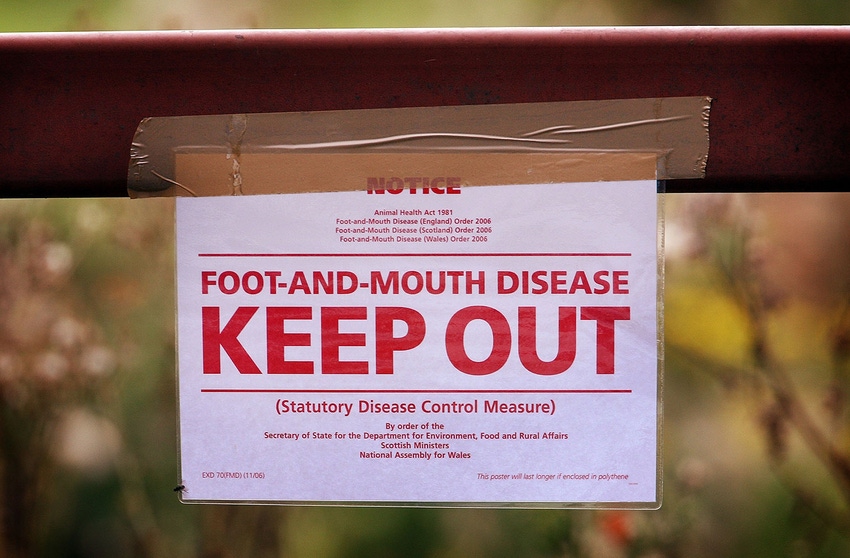Pirbright researchers find that the foot-and-mouth disease virus binds to a receptor known as CR2/CR1 on the follicular dendritic cells.
May 31, 2022

Research at the Pirbright Institute reveals that the foot-and-mouth disease virus interacts with immune cells in tissues called lymphoid tissues, which are an essential part of the immune system.
This helps the virus to persist in animals such as African buffalo and allows these animals to become 'carriers' of the disease, which in turn poses a risk to other susceptible livestock.
Understanding how the animal immune system fights FMDV may provide further insight into how to create vaccines that give long-lasting immunity to livestock.
Current vaccines provide short term protection, so a better understanding of immunity to this devastating disease could lead to the development of longer lasting vaccines that would benefit those farmers whose livelihoods (food and economic security) depend on their herds.
Previous Pirbright research has shown that FMDV persists in African buffalo and understanding how this occurred is the next step in the fight against this virus. In this study, scientists used a mouse model for a detailed investigation. They discovered that FMDV binds to cells in the immune system called follicular dendritic cells, which are essential for presenting the virus to the immune system so that it can prevent disease.
Follicular dendritic cells are only found in lymphoid tissues, such as lymph nodes and the spleen. These tissues are part of the adaptive immune response which allows the immune system to mount a specific response and have 'memory' of it so it can recognize a subsequent infection.
Researchers also found that FMDV binds to a receptor known as CR2/CR1 on the follicular dendritic cells. This receptor is important in the adaptive immune response and this research demonstrated that it was essential for trapping and retaining the virus, which in turn leads to a better, and longer-lived immune response.
Interestingly, the study also revealed which lymphoid tissues were important in FMDV infection and correlated to researchers' predictions on the origins of persistence in African buffalo.
Professor Bryan Charleston, director of The Pirbright Institute and Head of the Viral Immunology group said: "This research helps to bridge the knowledge gap of how the immune system deals with FMDV infection in large animals. Our extensive work in African buffalo, a natural host of the disease, allowed us to predict why and how persistence may occur and then test this theory in a small animal model. This has given us new insights into the immune responses to FMDV and could provide clues about how to increase vaccine protection longevity."
This work was supported by UK Research and Innovation Biotechnology and Biological Sciences Research Council Grants.
Source: The Pirbright Institute, which is solely responsible for the information provided, and wholly owns the information. Informa Business Media and all its subsidiaries are not responsible for any of the content contained in this information asset.
You May Also Like



